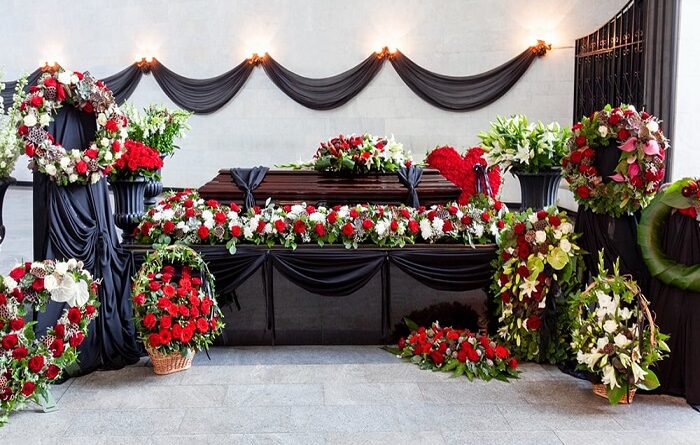Chinese Funerals Malaysia, What You Should Know
Attending a Chinese funeral in Kuala Lumpur, Malaysia, means understanding special customs and traditions. These practices help honour the deceased and comfort the family. Here are twelve signs and customs you should know about:
1. Attire: White and Black Clothing
At a Chinese funeral Malaysia, clothing plays a key role. Traditionally, people wear white to show mourning. White stands for purity and the journey to the afterlife. Black clothes are also fine, especially today. Both colours show respect. Stay away from bright colors, as they are seen as disrespectful. Dress modestly to reflect the seriousness of the occasion.
2. Burning Incense: A Symbolic Gesture
Burning incense is a popular practice at Chinese funerals. People light incense in front of the altar where the deceased’s photograph is shown. This act honours the deceased and guides their spirit to the afterlife. The rising smoke helps lead the spirit safely to the next world. Usually, people burn an odd number of incense sticks. Even numbers are for celebrations, not for funerals.
3. Red Banners and Paper Offerings: Traditional Symbols
Red banners with Chinese characters are common. They often carry messages wishing peace for the deceased. People also burn paper offerings like money and clothes. This tradition ensures the deceased has what they need in the afterlife. The paper offerings are crafted with care and often have intricate designs. This practice shows the importance of taking care of the deceased in the next world.
4. Rituals Performed by Priests: Spiritual Guidance
A Chinese funeral in Kuala Lumpur often includes rituals led by priests. These priests chant prayers and perform ceremonies to guide the deceased’s spirit. They use special instruments like bells and drums and recite sacred texts. These rituals help ensure the deceased’s journey to the afterlife is smooth. The presence of priests highlights the spiritual aspect of the ceremony.
5. Offerings of Food and Drink: Honouring the Deceased
During the wake, people place food and drink on the altar or in special spots. These offerings are for the deceased’s spirit. Common items include fruits, cakes, and drinks. Family members might share these offerings with guests. This tradition reflects the belief that sharing food shows respect and provides comfort.
6. Display of Photographs: A Focus of Remembrance
Photographs of the deceased are displayed prominently. These pictures are set up on an altar or a special table, often surrounded by candles and incense. The photograph helps everyone remember and honour the deceased. It usually shows the deceased in their best attire or a special moment. This display provides a personal touch to the ceremony.
7. Funeral Procession and Rituals: A Structured Journey
A typical Chinese funeral Malaysia, includes a procession from the home to the burial site. The procession is carefully planned and includes various rituals. It begins with a farewell at the home, then moves to the burial ground. During the procession, specific rites are performed to help the deceased’s spirit. The journey may include chanting, traditional music, and scattering symbolic items.
8. Family and Close Friends First: Order of Respect
During the wake and funeral, family and close friends are first to pay their respects. This shows their close connection to the deceased. They may also take part in specific rituals or ceremonies. Giving priority to family and friends highlights the importance of these relationships in the mourning process.
9. Avoidance of Laughter and Celebration: Maintaining Solemnity
Chinese funerals in Kuala Lumpur are serious occasions. Attendees should avoid laughing or celebrating. This keeps the focus on mourning and supporting the family. Maintaining a solemn atmosphere shows respect for the deceased and helps create a reverent environment.
10. Special Food Preparation and Sharing: A Tradition of Respect
People prepare special food items for the funeral and share them with guests. These dishes follow traditional recipes and hold symbolic meaning. The family offers these meals to show respect and hospitality. Sharing food represents a gesture of appreciation for those who support the family. This practice reinforces the connection between the living and the deceased.
11. Offering of Flowers: An Expression of Condolence
Flowers are often brought to Chinese funerals. They are usually placed around the altar or the funeral area. The flowers add a touch of beauty and express condolences. They symbolize the life and beauty of the deceased. The type and colour of flowers might follow specific traditions. The presence of flowers helps create a respectful and comforting environment.
12. No Whistling or Sharp Noises: Respectful Quiet
It is customary to avoid whistling or making sharp noises at a Chinese funeral. These sounds are believed to disturb the spirit or bring bad luck. Maintaining a quiet and respectful atmosphere is important. This practice helps to ensure that the environment remains solemn and respectful throughout the ceremony.
Summary
Understanding Chinese funerals in Malaysia involves recognizing these twelve signs and customs. Each practice shows respect for the deceased and maintains cultural values. By following these customs, attendees honour the departed and support the family.

